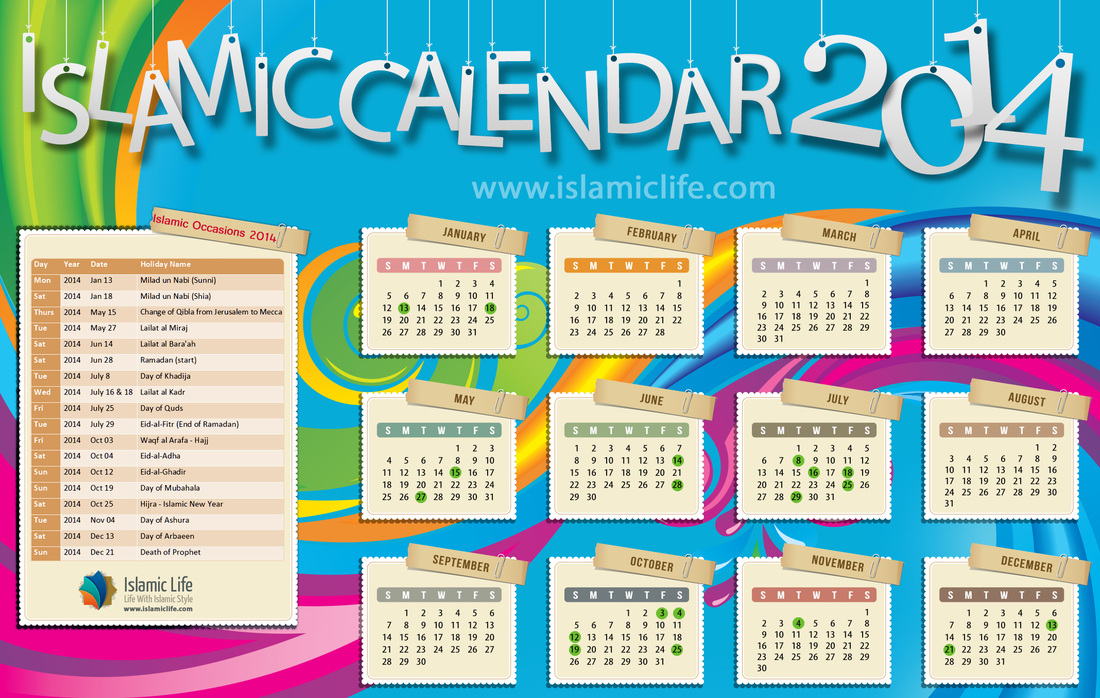
This is Hajj and it falls on the eighth, ninth, and tenth of the month. Ḏū al-Hijjah ذُو ٱلْحِجَّة the possessor of pilgrimageĭuring this month, Muslims from all over the world gather in Mecca to visit the Kaaba (the House of Allah SWT). People have the right to defend themselves if they are attacked.ġ2. This is a holy month in which war is prohibited. The Eid al-Fitr, or "Festival of Breaking the Fast," marks the first day of this month, signaling the end of fasting and Ramadan.ġ1. Muslims must fast from pre-dawn until sunset and support charities to the poor and needy during this time.Īt this time of year, female camels would ordinarily be in calf and start raising their tails.

Ramadan is the holiest month in the Hijri calendar. The name is said to be derived from the high temperatures caused by the sun's excessive heat. Sha'ban may also be related to a verb that means "to be in the middle of two things", namely between the sacred month of Rajab and the blessed month of Ramadan.įasting is associated with burning because one's worldly desires will burn on an empty stomach. This was the time of year when Arab tribes dispersed in search of water. Rajab is also related to a verb that means "to remove," so named because pre-Islamic Arabs would remove the heads of their spears and abstain from combating. In Arabic, جماد refers to a 'dry, arid, and parched land devoid of rain', and ٱلْآخِر means 'the final.' It denotes the final or last month of dry weather.įighting is prohibited during the second sacred month. Jumada may possibly be linked to a word that means "to freeze," and another tale claims that water freezes at this time of year.Ħ. Often regarded as the pre-Islamic summer. Since the months of the Islamic calendar were sometimes named after the weather conditions and seasons at the time they were named, it is likely that it was the end of spring when this month was named.ĥ. It is also a very holy month for many Muslims, as it is the month in which the Prophet Muhammad (peace and blessings be upon him) was born.Ĥ. Rabīʿ al-'Awwal رَبِيع ٱلْأَوَّل the first springīecause calves were grazed during this month, it also signifies to graze. Pre-Islamic Arab dwellings were supposedly termed this way because they were unoccupied this time of year while their residents gathered food.ģ. List Of The 12 Months Of The Islamic CalendarĪ holy month, so called because battle and all forms of fighting are prohibited (haraam) during this month. As a result, depending on the visibility of the moon, the astronomical placement of the earth, and weather conditions, each month might have 29 or 30 days. Traditionally, this is based on real observation of the crescent moon (hilal) signifying the end of the preceding lunar cycle and hence the previous month, and thus the beginning of the new month. Prophet Muhammad (peace and blessings be upon him) and his followers (may Allah SWT be pleased with them) moved from Mecca to Medina that year, establishing the first Muslim community (ummah), an event known as the Hijra.Įach month of the Islamic calendar begins with a new lunar cycle. The Hijri period, whose era was founded as the Islamic New Year of 622 CE, is used in the Islamic calendar. Rents, salaries, and other comparable recurring obligations are typically paid according to the civil calendar. Iran and Afghanistan are notable outliers to this rule, as they follow the Solar Hijri calendar. The Gregorian calendar is used in virtually all nations where Islam is a major religion, with Syriac month-names used in the Levant and Mesopotamia (Iraq, Syria, Jordan, Lebanon, and Palestine).


It is therefore an important part of Islam. It is used to establish the correct dates of Islamic holidays and ceremonies, such as the yearly fasting period (the month of Ramadan) and the right time for the Hajj (the pilgrimage to Mecca, Saudi Arabia). The Hijri calendar, also known as the Lunar Hijri calendar and (in English) as the Islamic, Muslim, or Arabic calendar, is a lunar calendar with 12 lunar months in a year that lasts 354 or 355 days.


 0 kommentar(er)
0 kommentar(er)
